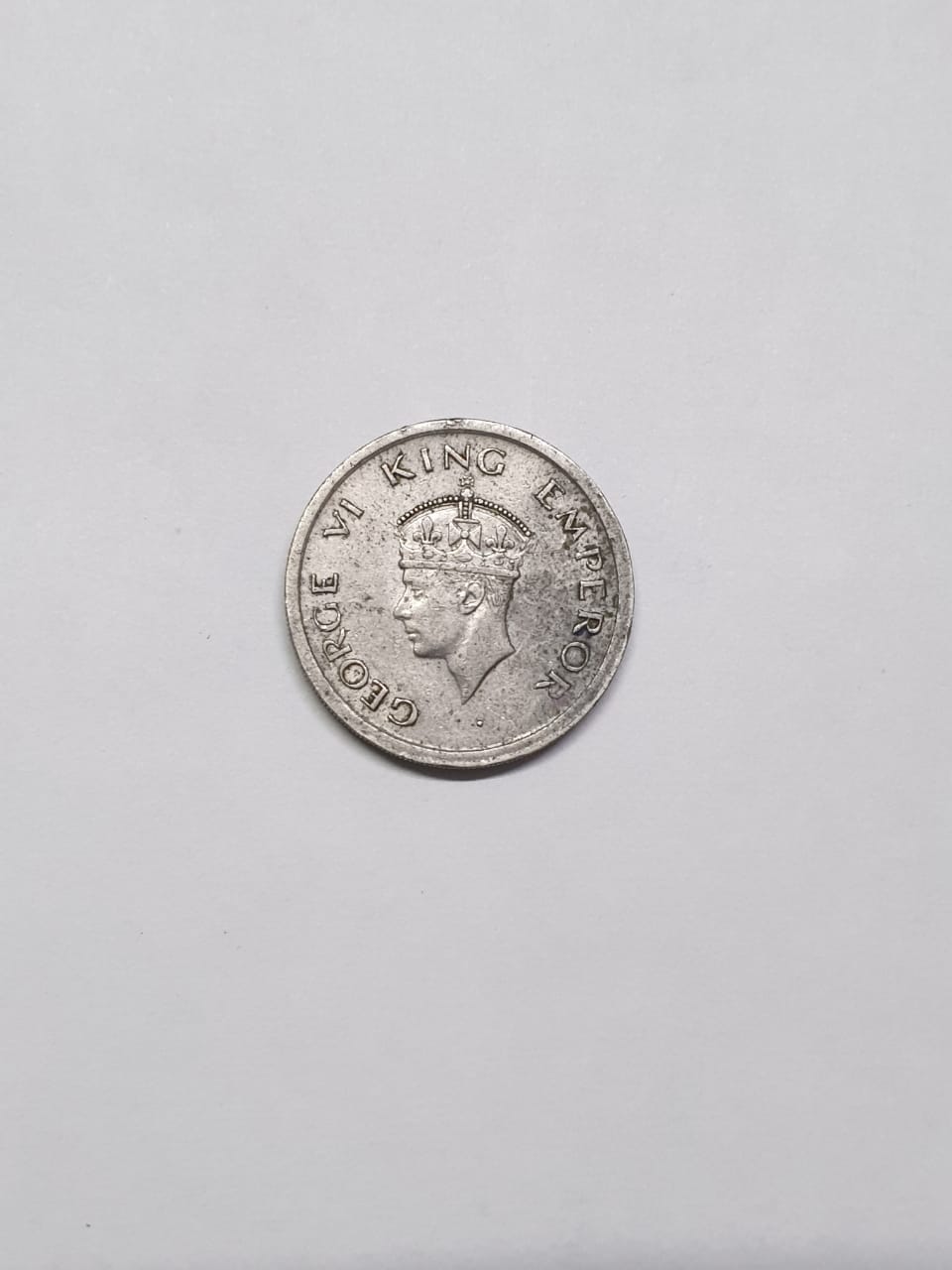British Indian Rupee Coin: Obverse View
After the death of King George V, his son (to-be King Edward VIII) abdicated before his coronation. Therefore, no coins were minted using his portrait. Instead, his brother was crowned in May 1937 as King George VI. The first coin of India with his image was minted in 1938. In 1939, the price of silver began to increase after the outbreak of World War II, leading to the hoarding of silver coins. This led to minting coins using a mixture of materials. The currency of this coin is One Rupee, from the year 1947. It is of particular significance since the minting of a new rupee was announced on 24th May 1947, the last series of coins to be produced under British rule. These coins were made from pure nickel, had an updated reverse design (an Indian tiger), and were comparatively smaller than the previous rupee. Post-independence in August that year, the minting of coins with portraits of British rulers was stopped.
Coins minted in different locations had specific tells, like Bombay issues have a small dot below the date. Since Calcutta mints used no marks at all, it is suggested that the contributor's coin was minted there.
The coin is 73 years old, and has belonged to the contributor for 10 years.
Specifications of the coin
Obverse
Representation of George VI, with the words 'George VI King Emperor' engraved
Contributed By :
Alina Naqvi
